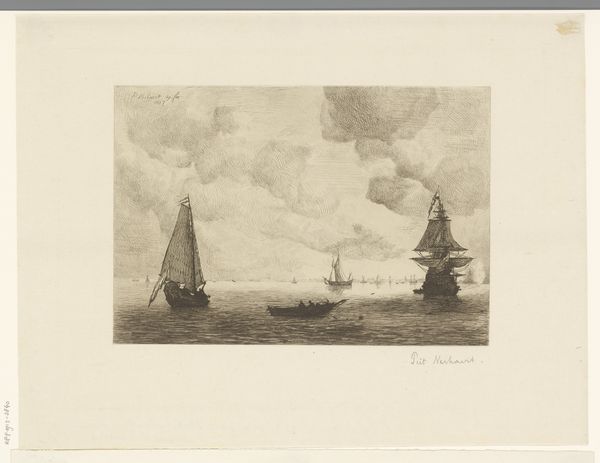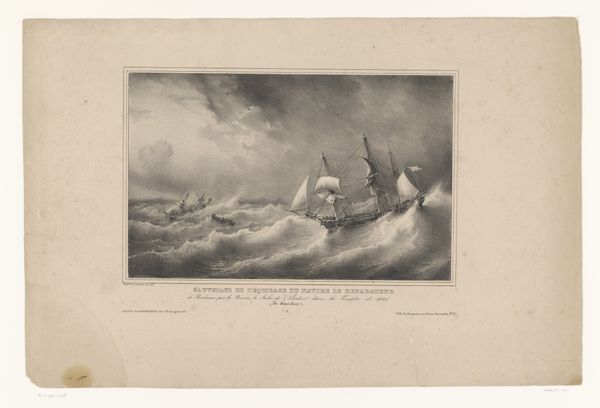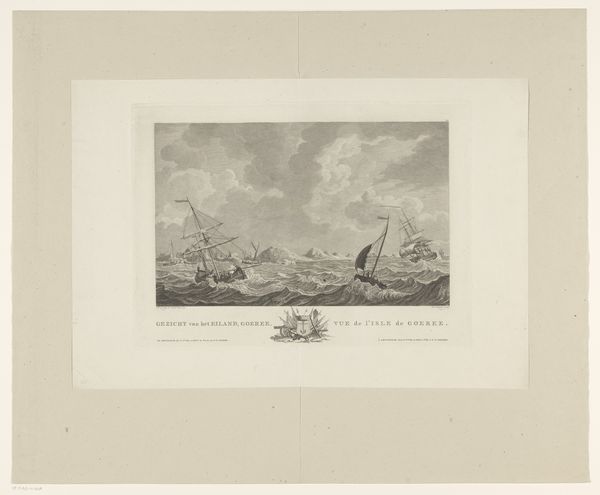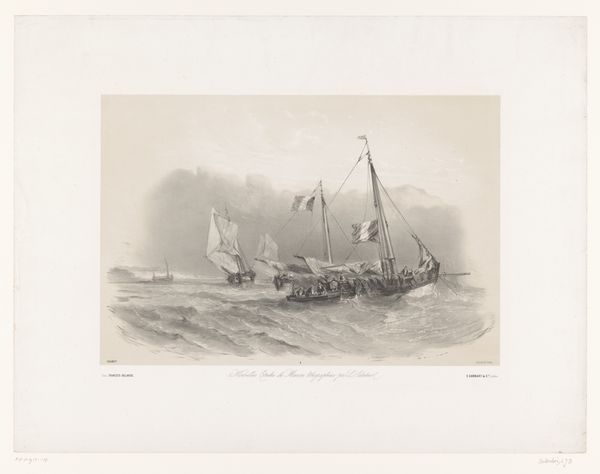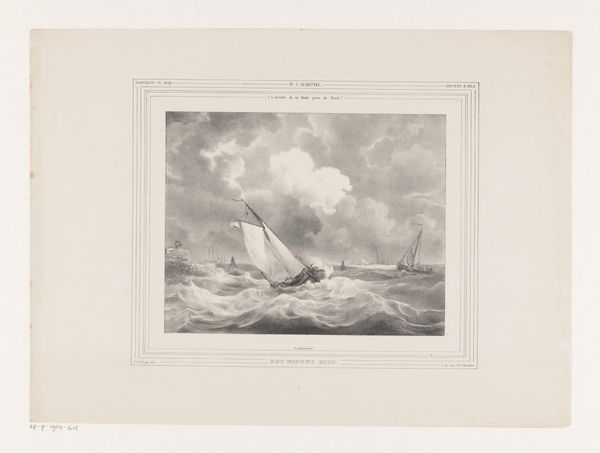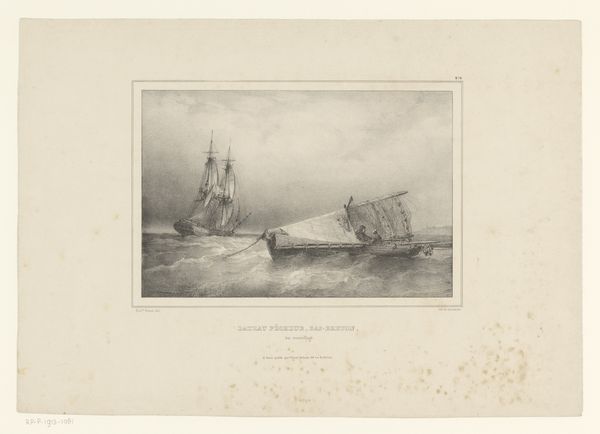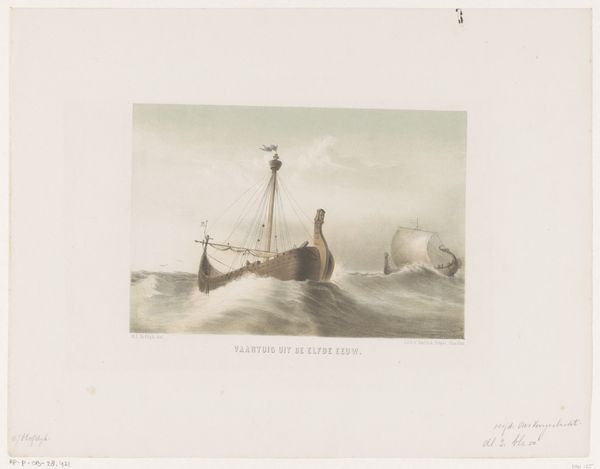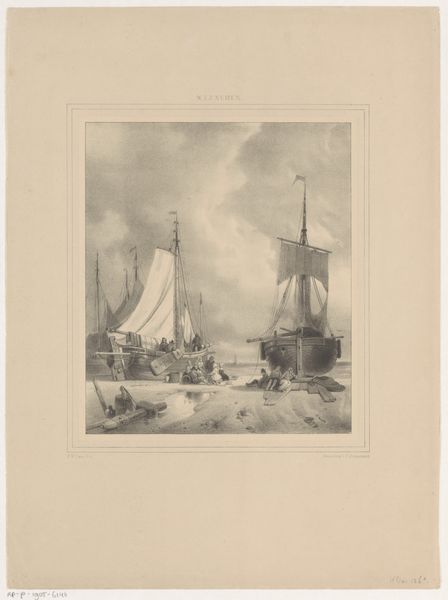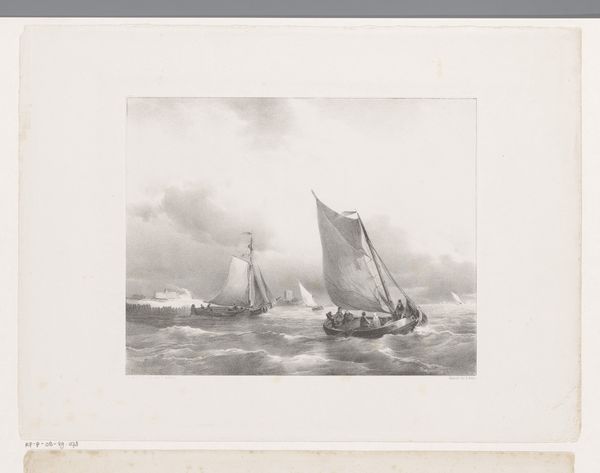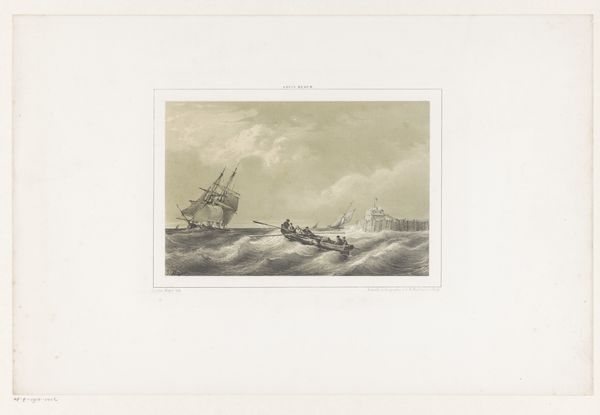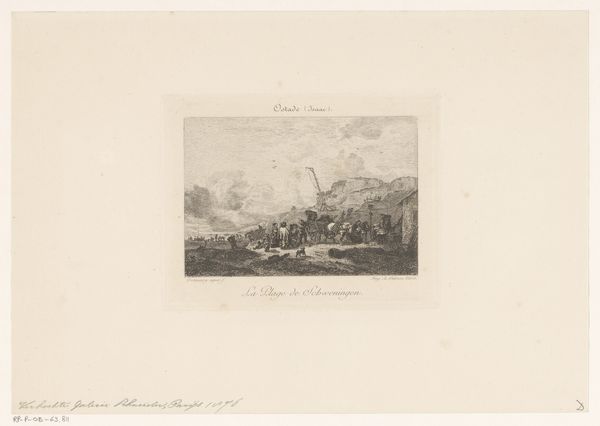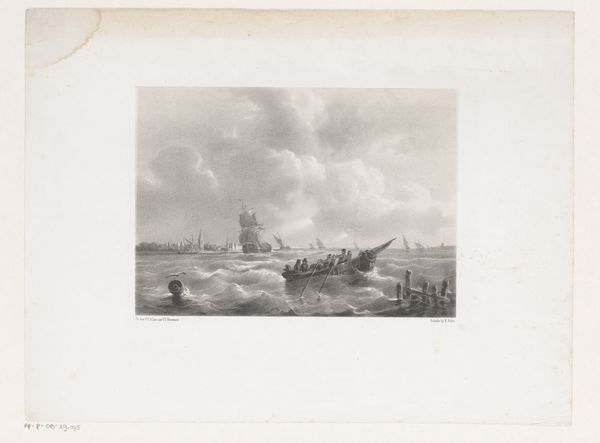
Fotoreproductie van een schilderij van een zeeslag door Willem van de Velde 1876
0:00
0:00
Dimensions: height 96 mm, width 145 mm, height 198 mm, width 263 mm
Copyright: Rijks Museum: Open Domain
Editor: Here we have an 1876 gelatin silver print; a reproduction of a painting of a naval battle by Willem van de Velde. The smokey haze gives a real sense of the chaos of battle. How do you approach interpreting something like this? Curator: I immediately look at the chain of production and its materiality. This isn’t just a depiction of a battle, but a *reproduction* – a photograph *of* a painting. How does that distance or re-frame the original act of artistic labor? Editor: That's a fascinating point! It does change the context. So, what does the move from painting to photography tell us? Curator: Well, consider the economics of art. Van de Velde’s original was probably commissioned, destined for a wealthy patron's collection, asserting maritime power. This print, on the other hand, mass-produces that imagery. Think about its distribution; who was the intended consumer, and how did the shift to photography affect that market and the artwork's message? Editor: It’s interesting how the photographic medium makes it more widely accessible, a sort of democratization of art, maybe? Were photographs considered art at the time? Curator: That’s precisely the tension! Photography was blurring lines between high art and industrial production. Was this 'art' or simply documentation, a commodity like any other? Looking closely at the texture of the print itself, the silver gelatin process… what does the materiality tell us about 19th-century attitudes towards art, reproduction, and consumption? The original painting signified status and naval strength, while its reproduction could decorate a middle-class home, subtly influencing ideas around nationhood. Editor: I never thought of a photograph of a painting carrying so much weight! I’ll definitely pay more attention to that in the future. Thanks for shedding light on the process and the cultural implications, this has completely changed how I view the piece. Curator: Indeed. Considering materiality allows us to rethink established canons and understand art as entangled in broader economic and social forces.
Comments
No comments
Be the first to comment and join the conversation on the ultimate creative platform.
